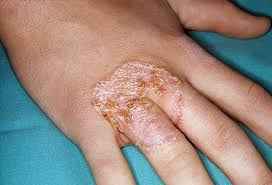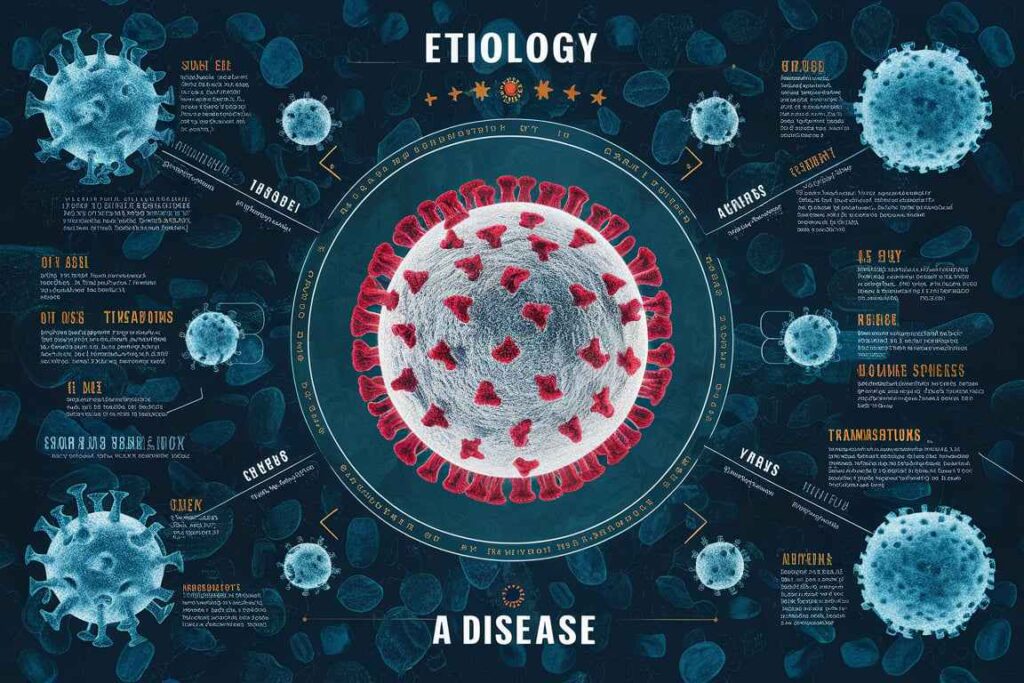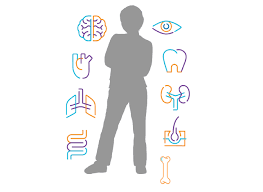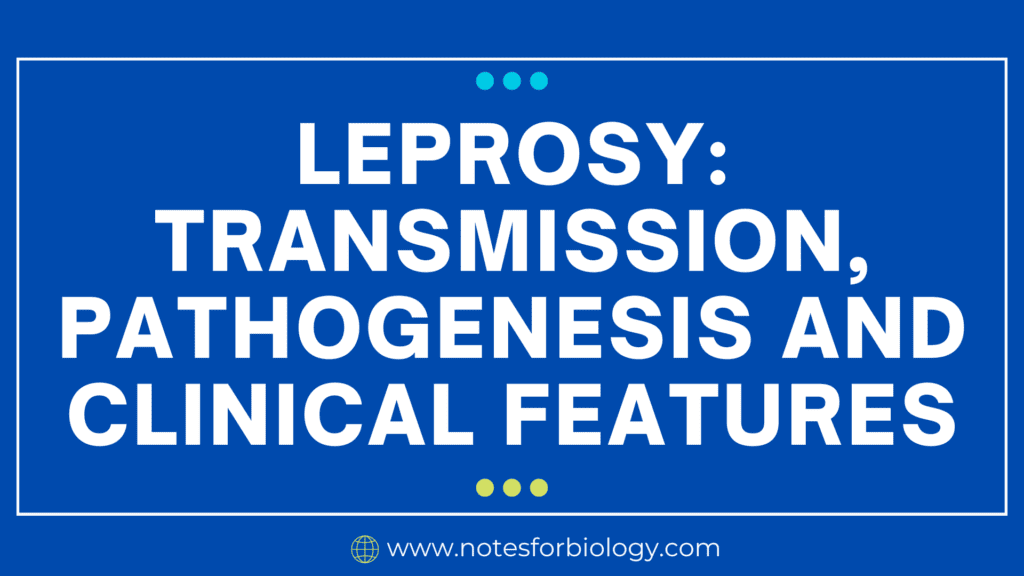Tinea manuum is a fungal hand infection caused by dermatophytes. It is uncommon compared to other types of tinea and is frequently accompanied with tinea pedis (athlete’s foot) or tinea corporis (body ringworm).
Table of Contents
Tinea Manuum
Tinea manuum is a fungal infection of the hands, primarily caused by dermatophytes, specifically Trichophyton rubrum, Trichophyton mentagrophytes, and, less commonly, Epidermophyton floccosum. The infection can be acquired through direct contact with an infected person, animal, or contaminated objects like towels and gardening tools. Clinically, tinea manuum manifests as dry, scaling skin, particularly on the palms, which may appear thickened and fissured. Additional symptoms include subtle erythema (redness), hyperkeratosis (thickening of the outer skin layer), and varying degrees of itching and burning. Vesicular lesions, resembling blisters, can also form, especially along the sides of the fingers, and the infection often affects one hand more than the other.

Etiology
Tinea manuum is a dermatophyte infection of the hands, caused by fungi that thrive on keratin in the skin, hair, and nails. The primary causative organisms include:
- Trichophyton rubrum: This is the most frequent pathogen responsible for tinea manuum, known for causing chronic and often recurrent infections of the skin and nails.
- Trichophyton mentagrophytes: Less commonly associated with tinea manuum, this species can cause more acute and inflammatory infections compared to T. rubrum.
- Epidermophyton floccosum: Rarely implicated in tinea manuum, this fungus typically causes infections in the groin and feet but can occasionally infect the hands.

Causative Organisms
Dermatophytes, namely Trichophyton rubrum.
Trichophyton Mentagrophytes
Epidermophyton floccosum.
Transmission:
Direct contact with an infected person or animal.
Indirect contact with contaminated objects (fomites) such towels, clothing, and surfaces.
Autoinoculation can occur in various diseased body parts, particularly the foot.
Clinical Manifestations
Lesions:
Scaling and Dryness: The palms are typically covered in persistent, dry, scaling lesions.
Hyperkeratosis is a thickening of the skin, usually with a well-defined erythematous (red) border.
Vesicular lesions can appear as vesicles or pustules, often on the fingers or back of the hands.
Bilateral Involvement: Tinea pedis is sometimes associated with the term “two feet, one hand syndrome” because only one hand is affected.
Clinical Manifestation

Tinea manuum presents with a range of symptoms that can vary in severity:
- Dry, scaling skin: Especially on the palms, which may appear thickened and fissured.
- Erythema: Redness of the affected skin.
- Hyperkeratosis: Thickening of the outer skin layer.
- Itching and burning sensation: These symptoms can range from mild to severe.
- Vesicular lesions: Blister-like formations, often on the sides of the fingers.
- Unilateral involvement: Frequently affects one hand more than the other.
Diagnosis
Diagnosis involves a combination of clinical evaluation and laboratory tests:
- Clinical examination: Observation of characteristic skin changes.
- KOH preparation: Skin scrapings are treated with potassium hydroxide (KOH) to reveal fungal elements under a microscope.
- Culture: A sample is cultured to identify the specific type of fungus.
- Wood’s lamp examination: Generally not useful for tinea manuum, as most dermatophytes do not fluoresce.
Treatment
Treatment typically involves antifungal medications, which can be topical or systemic depending on the severity of the infection:
1. Topical antifungals: For mild cases.
- Clotrimazole: Applied twice daily until symptoms resolve.
- Terbinafine: Applied once or twice daily.
- Ketoconazole: Applied once daily.
2. Oral antifungals: For more extensive or resistant cases.
- Terbinafine: 250 mg once daily for 2-4 weeks.
- Itraconazole: 100-200 mg daily for 2-4 weeks.
- Fluconazole: 150-300 mg once weekly for 2-6 weeks.
Prevention
Preventive measures include:
- Maintaining good hand hygiene: Regular washing and thorough drying.
- Avoiding shared personal items: Such as towels and gloves.
- Keeping hands dry: Especially after washing.
- Using antifungal powders: In environments prone to moisture.
- Treating coexisting infections: Addressing fungal infections in other body areas to prevent spread.
Frequently Asked Question
Define Tinea manuum.
Tinea manuum is a fungal infection of the hands, primarily caused by dermatophytes, specifically Trichophyton rubrum, Trichophyton mentagrophytes, and, less commonly, Epidermophyton floccosum. The infection can be acquired through direct contact with an infected person, animal, or contaminated objects like towels and gardening tools.
What are the prevention of Tinea manuum ?
The prevention of Tinea manuum are
1. Maintaining good hand hygiene
2. Avoiding shared personal items
3. Keeping hands dry
4. Using antifungal powders
5. Treating coexisting infections
Related Article
Itraconazole-mechanism, spectrum, pharmacokinetics, uses and side effect




